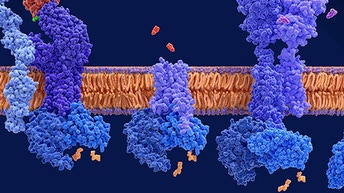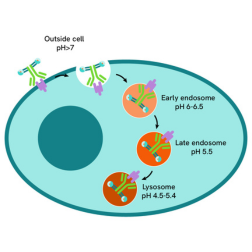
Streamlined antibodies and Antibody-Drug Conjugates (ADCs) internalization monitoring
Track the trajectory of ADCs with pHSense - from surface binding to lysosomal delivery.
Track the trajectory of ADCs with pHSense - from surface binding to lysosomal delivery.
Efficient internalization and payload release are critical for successful ADC therapies. Traditional methods like microscopy and flow cytometry often lack sensitivity and involve complex, variable protocols. Revvity's pHSense reagents offer a sensitive, scalable, and no-wash solution for tracking ADC uptake.
Designed to respond to the acidic environment of endosomes and lysosomes, pHSense probes emit a strong, long-lived fluorescent signal upon internalization. Using Eu Fab anti-Human IgG, and Eu Fab anti-Mouse IgG2, the assay enables precise detection of antibody and ADC internalization via time-resolved fluorescence (TRF), minimizing background noise and enhancing the signal-to-background ratio.
Compatible with standard TR readers (Envision, Nexus, Victor Nivo), pHSense simplifies workflows and boosts throughput - ideal for reliable, high-sensitivity ADC studies.
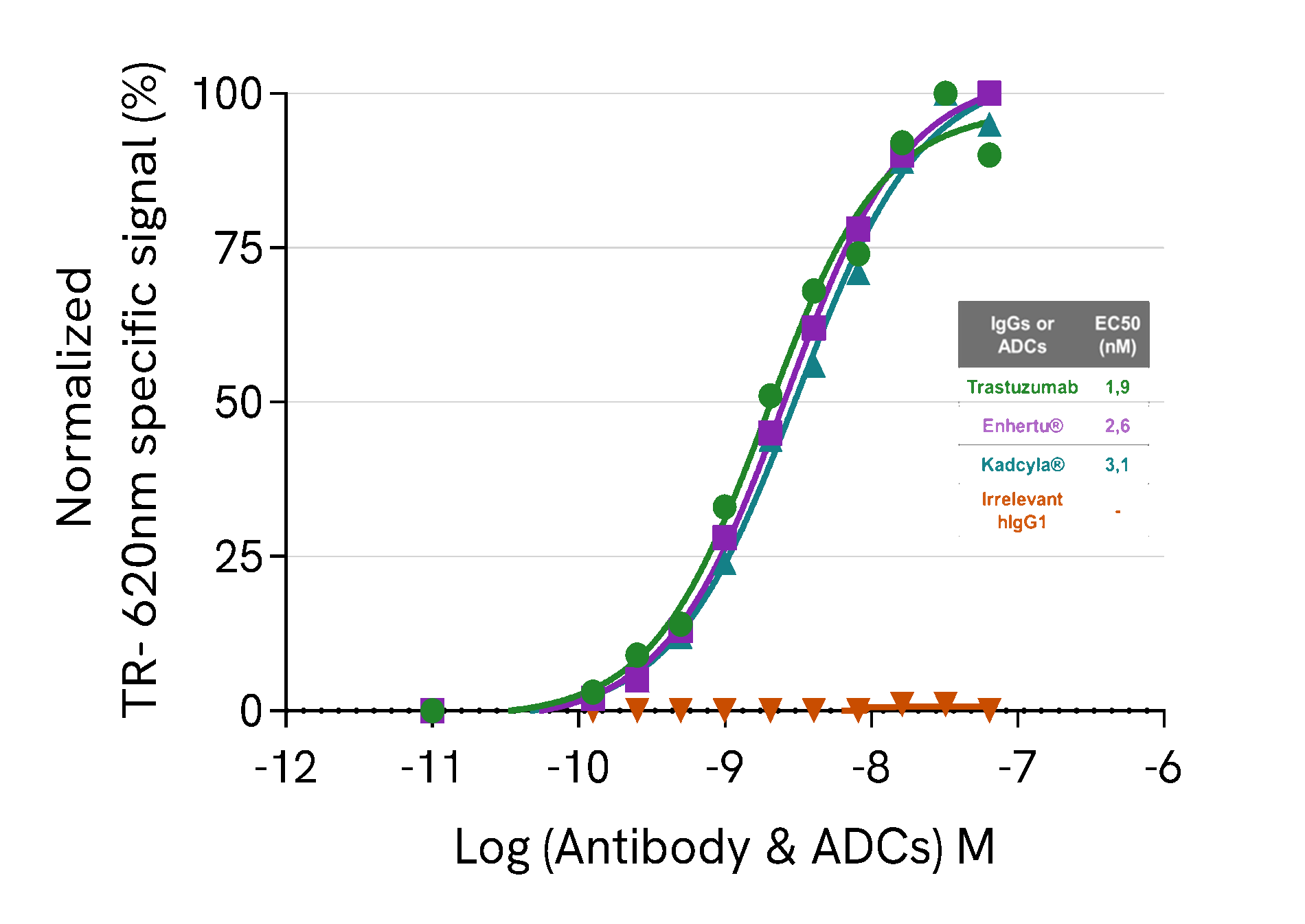
pHSense Eu internalization assays with Trastuzumab and Trastuzumab-based ADCs: Robust anti-HER2 IgG and ADC derivatives dose-dependent increases of TRF signal were measured at t3h whereas no signal was observed with an irrelevant human IgG1 antibody.
pHSense Eu Fab fragments are versatile tools for ADC internalization studies. They are:
- Compatible with a wide range of ADC payloads
- Suitable for various linker chemistries
- Effective across different Drug-to-Antibody Ratios (DARs)
Explore our pHSense reagents to accelerate your ADC research!
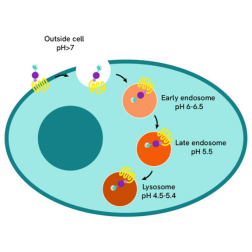
GPCRs and receptor internalization
From binding to signaling to internalization: Cell-based fluorescence assays for GPCR characterization.
From binding to signaling to internalization: Cell-based fluorescence assays for GPCR characterization.
G protein-coupled receptor (GPCR) internalization plays a critical role in regulating receptor availability at the cell surface, contributing to desensitization and controlling the duration and intensity of GPCR-mediated signaling.
Revvity's pHSense assay offers a robust, plate-reader-based solution for monitoring GPCR internalization. Utilizing a pH-sensitive dye, the assay is optimized for kinetic and time-resolved measurements, even at low endogenous expression levels. It enables rapid, high-throughput data generation using standard plate readers, making it ideal for drug discovery workflows.
GLP1R internalization assay in primary INS1E cells:
The pHSense Eu Fab anti-mouse IgG can be used in combination with a neutral anti-GPCR to perform internalization assays in unmodified cells, with endogenous levels of receptor expression.
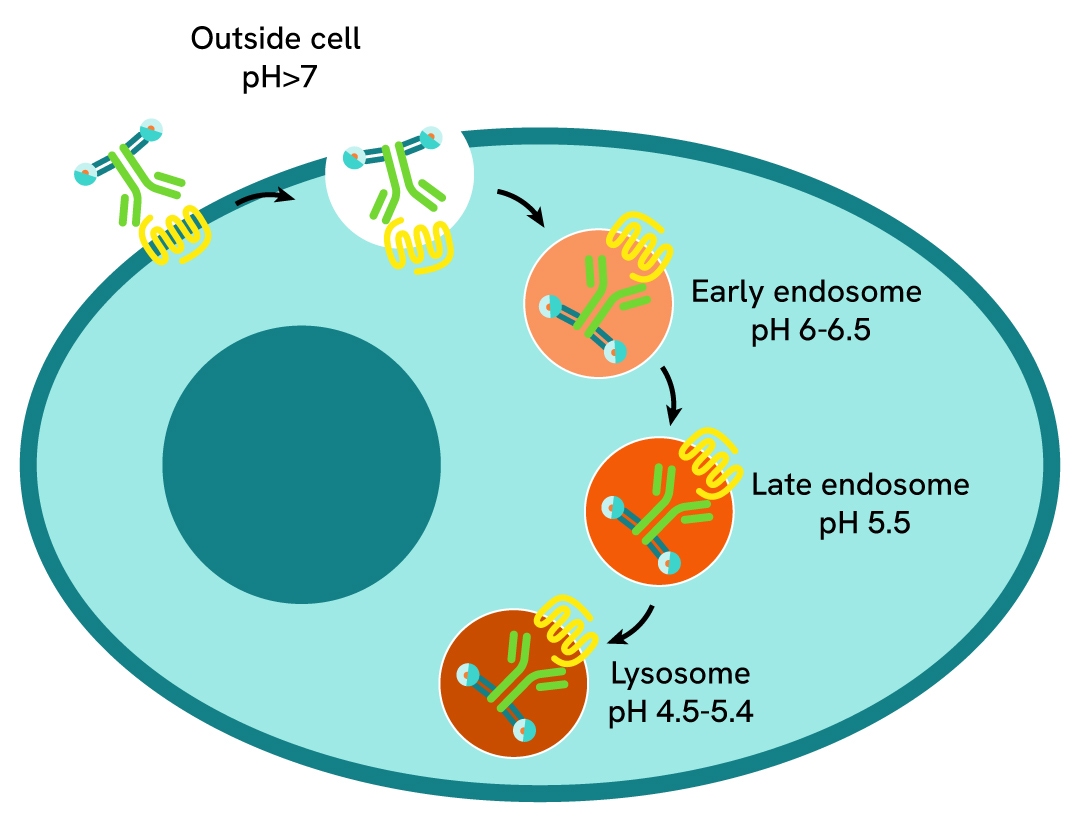
Principle of GPCR internalization assay in unmodified cells using the pHSense Eu Fab Anti-Mouse IgG and an anti-GPCR.
In this case study, primary INS1E rat pancreatic cells were plated at 25K cells/well and cultivated for 96h. Prior to running the assay, 50nM pHSense Eu Fab anti-mouse was incubated with 25nM anti-GLP1R for 1h at RT. The mix was added to the cells with several concentrations of GLP1R agonist Exendin4 for 1h at RT before reading. The resulting dose-response curve demonstrate pHsense can quantify GLP1R internalization in primary cells.
A similar assay was run using Exendin4 side-by-side with the GLP1R antagonist Exendin9-39 and unstimulated cells. The results showed here show the differential internalization between agonist and antagonist conditions, as well as the fact that antagonist incubation keeps internalization to its constitutive level.
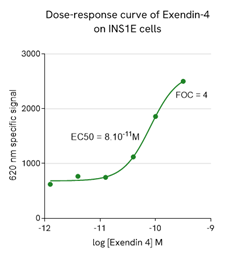
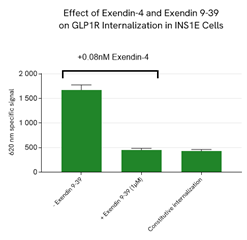
GLP1R internalization in INS1E cells. (A) Exendin4-induced internalization dose-response. (B) Internalization in presence of agonist Exendin4, Antagonist Exendin9-39 and constitutive internalization.
Flexible formats in SNAP and FLAG receptors:
The pHSense SNAP EU Labeling Reagent and the pHSense Eu Anti-FLAG allow to run internalizations assays in cells lines that have been modified to express a GPCR of interest with either tag on the extracellular N-terminal portion of the receptor.
These common tags are often already present in modified GPCR cell lines, or can be added easily via plasmidic transfection, making them a convenient way to design flexible GPCR internalization assay in a cell line of choice.
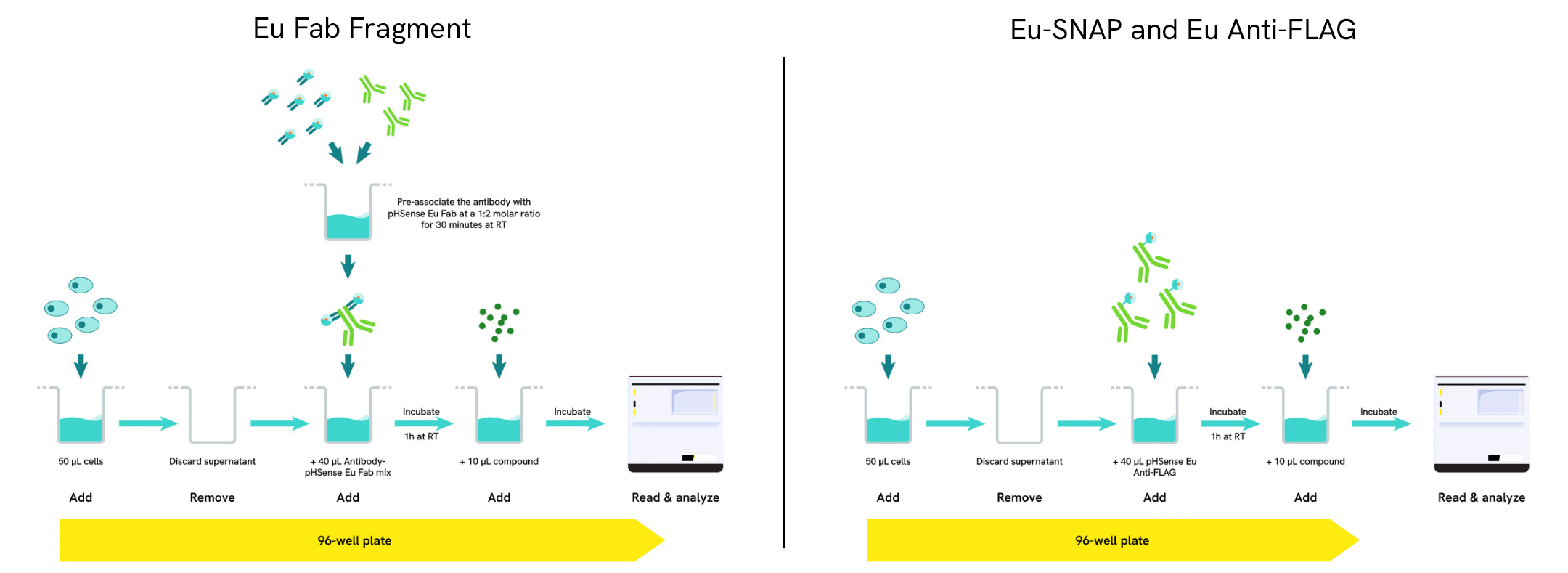
Hear from our customers
"With pHSense, my experience was very positive. The assay itself was straightforward to set up and run, and I was able to detect a clear, specific signal within just 20 minutes, compared to the 3 hours needed with other probes. The signal-to-noise ratio was greatly improved in my tests, allowing for further flexibility and optimization options. The support provided by the Revvity team was very helpful. Overall, I would recommend pHSense for groups investigating antibody internalisation in adherent cell systems."
Dimitri Sideris
The Discovery Centre (DISC) - AstraZeneca, UK)


































